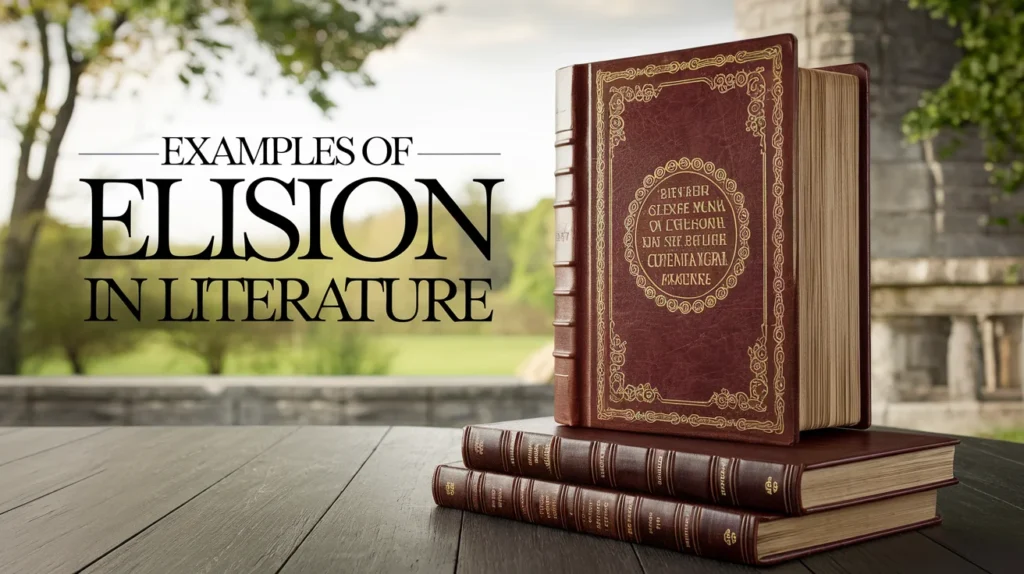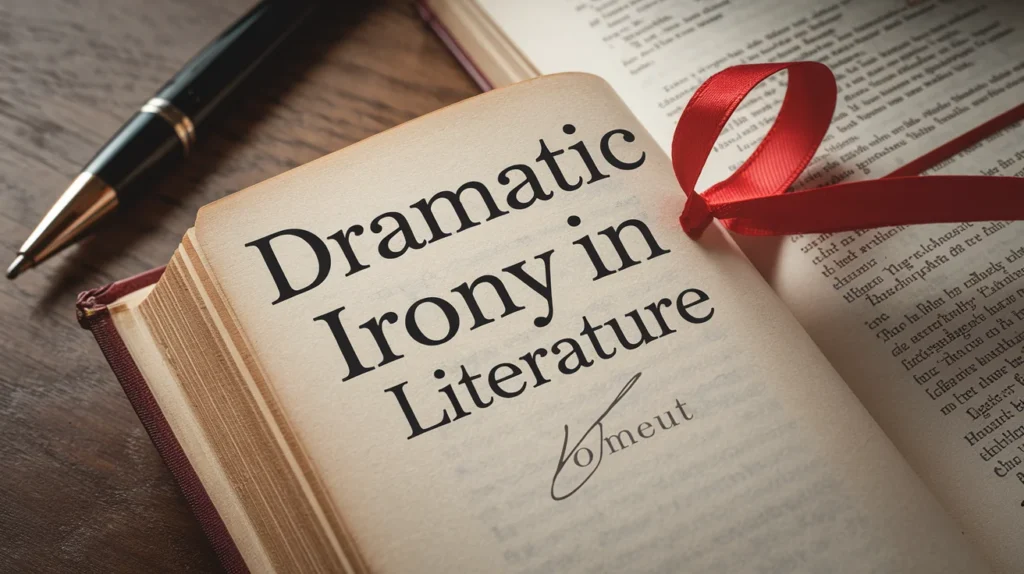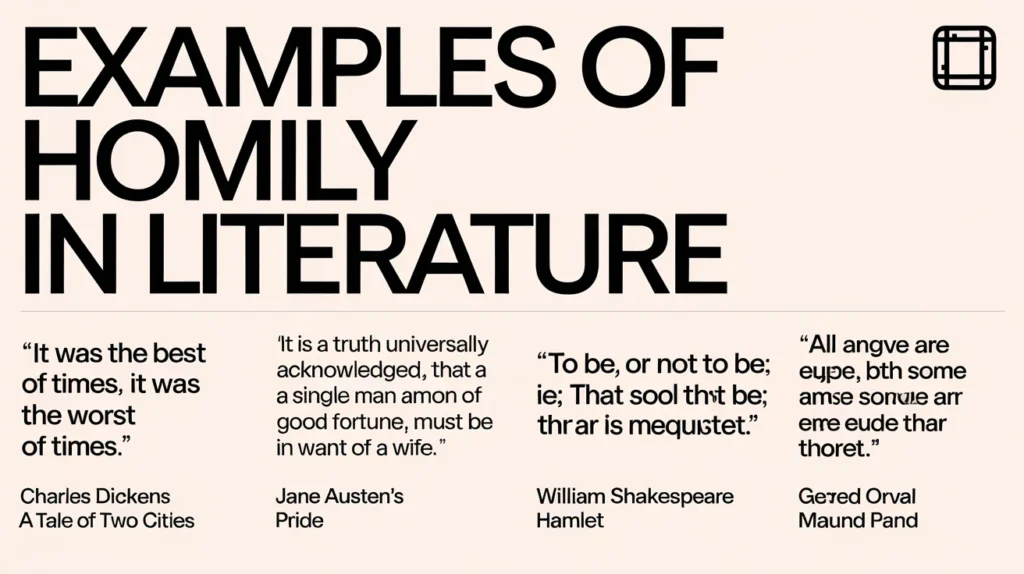Have you ever read a poem or novel where a word felt like it was missing a letter or two? Maybe you’ve seen words like o’er instead of over, or ne’er instead of never. That’s elision in action! It might seem small, but this literary device plays a big role in shaping how stories sound, feel, and flow. From Shakespeare’s plays to modern rap lyrics, elision brings rhythm and realism to language.
Elision helps writers trim down syllables to fit the beat of poetry. It also mimics how we speak in real life. If you’ve ever said “gonna” instead of “going to”, you’ve used elision without even thinking about it.
This article will show you what elision really is, how it differs from other terms like contraction and syncope, and why it’s a powerful tool for writers. We’ll break it all down using simple examples, clear definitions, tables, and even some famous literary quotes. You’ll also see how elision is used in modern writing, why it matters in speech, and how to spot it in any piece of text.
What Is Elision?
Elision is the omission of a sound or syllable when speaking or writing. Writers use it to keep the rhythm or make dialogue sound more natural.
Key Facts About Elision:
- Elision is common in poetry, drama, and everyday speech.
- It typically removes vowels or syllables.
- It’s often marked with an apostrophe (‘), like in “e’en” for even.
- Elision can happen at the beginning, middle, or end of a word.
Types of Elision:
| Type | Description | Example |
| Apheresis | Removal at the beginning | ’tis (it is) |
| Syncope | Removal in the middle | o’er (over) |
| Apocope | Removal at the end | lov’d (loved) |
Phonetic vs. Orthographic Elision
- Phonetic elision: Happens in speech. We drop sounds in fast talk. Example: “family” becomes “famly.”
- Orthographic elision: Happens in writing. Letters are visibly left out. Example: “ne’er” instead of “never.”
Elision in Context:
“When to the sessions of sweet silent thought / I summon up remembrance of things past…” – William Shakespeare
Here, “remembrance” is often shortened in performance to fit meter, showing phonetic elision.
Elision vs. Contraction vs. Syncope
Though these terms might sound similar, each serves a different purpose. Here’s how they compare:
Definition Comparison Table:
| Term | Definition | Example | Use in Literature |
| Elision | Removal of sound/letter for rhythm/tone | o’er = over | Poetry and dramatic scripts |
| Contraction | Two words combined into one with an apostrophe | don’t = do not | Dialogue, informal writing |
| Syncope | Sound dropped from the middle of a word | ev’ry = every | Poetic compression |
Key Differences:
- Contractions are grammatical and used in everyday speech.
- Elision focuses on sound, flow, or rhythm.
- Syncope is a subtype of elision, dropping middle syllables.
Visual Breakdown:
Contraction: I am → I’m
Elision: Even → E’en
Syncope: Family → Fam’ly
Writers like Shakespeare and Dickinson often used elision and syncope to maintain poetic meter.
Why Writers Use Elision
Elision isn’t just a stylistic quirk—it’s essential to how language works in art.
Main Functions of Elision:
- To Preserve Meter: Essential in poetry to keep lines rhythmic.
- To Mimic Speech: Makes dialogue feel real and relatable.
- To Show Dialect: Reveals class, region, or mood.
- To Create Mood: Compresses or softens phrases for emotional effect.
- To Save Space: Helps in lyrics or tight line poetry.
Case Study: Shakespeare’s Sonnets
Shakespeare used elision frequently to maintain iambic pentameter.
“When in disgrace with fortune and men’s eyes, / I all alone beweep my outcast state.”
Notice how “beweep” is an archaic and compressed form, contributing to flow.
Literary Techniques That Involve Elision
1. Apostrophe Elision
Used to indicate missing letters.
- Example: “o’er the hills” → over the hills
2. Apheresis
Beginning syllables are dropped.
- Example: ’tis for it is, ’cause for because
3. Apocope
Ending letters are dropped.
- Example: belov’d, walk’d, bless’d
4. Syncope
Middle sounds removed.
- Example: heav’n for heaven, ev’ry for every
Elision in Poetry: Famous Literary Examples
William Shakespeare
- “Measure for Measure” — Used to fit dramatic rhythm.
- “Macbeth” — Elision to heighten suspense and pace.
Charles Dickens
- “Bleak House” — Mimics working-class dialects.
- “Great Expectations” — Joe Gargery’s speech is full of elided words.
Emily Dickinson
- “Wild Nights – Wild Nights!” — Tight, intense lines with heavy elision.
Robert Frost
- “Stopping by Woods on a Snowy Evening” — Natural conversational tone using dropped sounds.
“The woods are lovely, dark and deep…”
Though not overtly marked, spoken versions often compress syllables.
Elision in Modern Literature and Media
Elision isn’t old-fashioned. It’s thriving in:
- Modern novels (e.g., The Road by Cormac McCarthy)
- Screenplays & scripts (dialogue compression)
- Rap and songwriting
Examples in Music:
- “I’m lovin’ it” – McDonald’s slogan
- “Ain’t no mountain high enough…” – Marvin Gaye
These phrases use elision and contraction to keep rhythm tight.
Cultural and Linguistic Influence on Elision
Different cultures use elision differently. Here’s a breakdown:
Dialect Examples:
| Region | Common Elisions | Example |
| Southern US | Dropped endings | goin’, fixin’ to |
| British English | Glottal stops | wa’er for water |
| Irish English | Fast speech, vowel drops | I’ll go t’pub |
Elision also appears in African-American Vernacular English (AAVE) and Cockney dialects.
How to Identify and Analyze Elision in Texts
Step-by-Step Guide:
- Look for Apostrophes: Often indicate dropped letters.
- Read Aloud: If a word sounds shorter, elision might be in play.
- Check Meter: In poetry, elision helps maintain syllable count.
- Notice Dialect: Dialogue often contains speech-based elision.
Practice Activity:
Find and mark elision in this line:
“O’er the ramparts we watch’d, were so gallantly streaming.”
Answer: O’er = Over, watch’d = watched
Common Misconceptions About Elision
Myth vs. Fact:
| Myth | Reality |
| Elision is bad grammar | It’s a literary and poetic technique |
| Only used in old writing | Found in modern music, books, and dialogue |
| All contractions are elision | Not always—contractions follow grammar rules |
Elision is not laziness—it’s linguistic artistry.
Related Terms and Concepts
- Contraction – Combining two words, e.g., isn’t
- Syncope – Removing sounds in the middle of a word
- Apocope – Dropping the end of a word
- Apheresis – Dropping the beginning
These terms often overlap but serve different purposes.
Conclusion
Elision may be subtle, but its impact on literature is powerful. It shapes tone, creates rhythm, and brings writing closer to natural speech. From Shakespeare’s verse to today’s pop lyrics, elision is everywhere. Learning to recognize and appreciate it gives readers deeper insight into how writers craft their words.
Whether you’re studying poetry, writing creatively, or just want to sound more natural in speech—elision is a tool worth understanding.
FAQs
Q: What is an example of elision in Shakespeare?
A: O’er for over is common. Shakespeare used it to keep the poetic meter.
Q: Is elision only used in poetry?
A: No, it’s also used in drama, dialogue, music, and everyday speech.
Q: How do I identify elision in a text?
A: Look for dropped letters, apostrophes, and listen for shortened sounds when reading aloud.
Q: Is elision grammatically incorrect?
A: Not at all. It’s a stylistic and rhythmic device used intentionally.
Q: Are contractions and elision the same?
A: They overlap but aren’t identical. Contractions follow grammar rules, elision focuses on sound.


